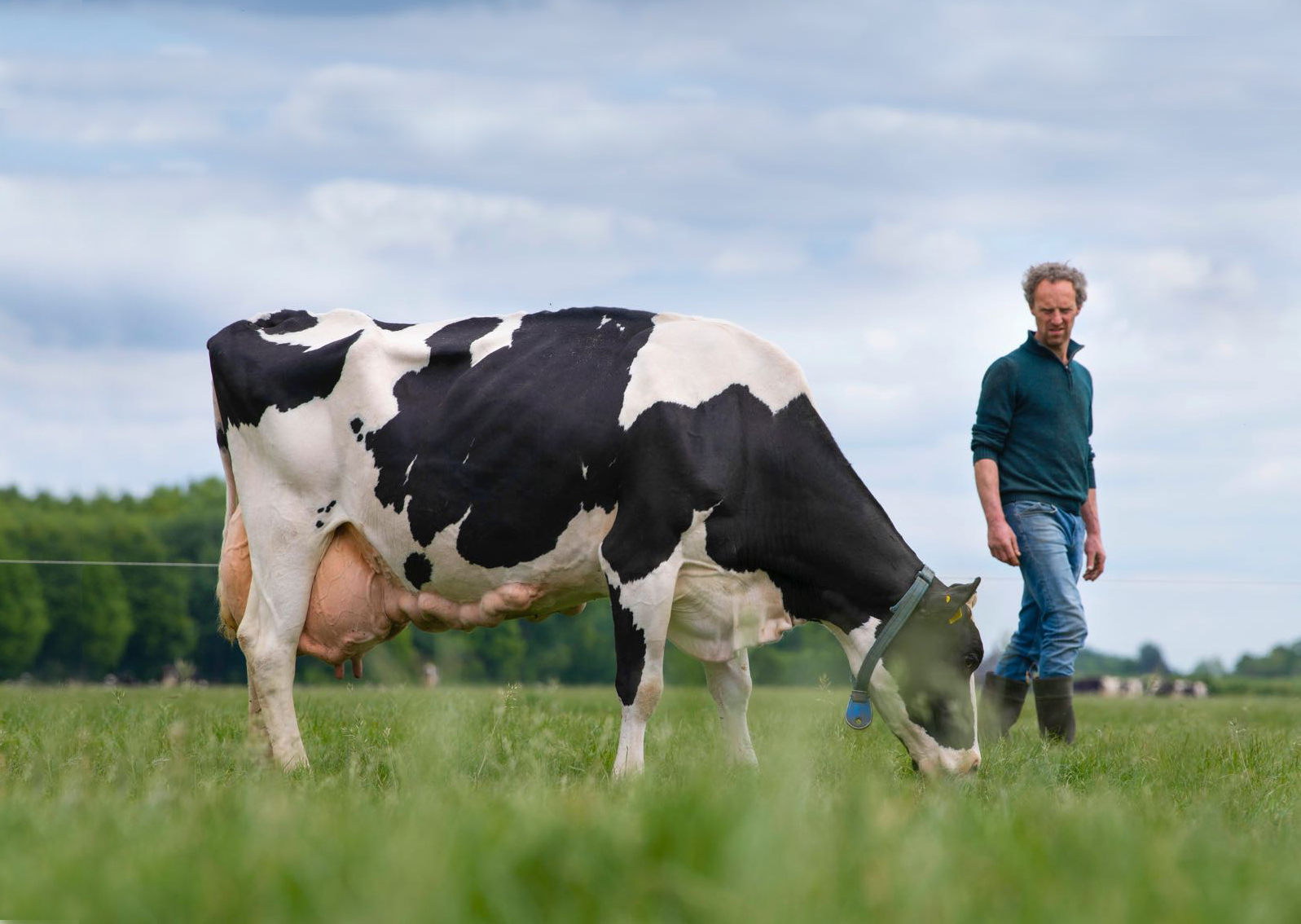In recent years, the lifespan of Dutch and Flemish dairy cows shows a continuous upward trend. In the last financial year, the average Dutch dairy cow was 2,233 days (about six years) of age when culled. By then, she had calved 3.9 times and produced a total of 37,401 kg of milk. The lifespan and lifetime production of Flemish dairy cows also increased last year to record levels.
These fantastic performances emphasise the skills of Dutch and Flemish dairy farmers and demonstrate to society that farmers take care of their animals. “But a longer lifespan also contributes to a good economic performance of the herd,” says Aniek Kock. She works at CRV as a breeding consultant and as part of her Business Economics degree at the Saxion University of Applied Sciences, she researched the financial added value of a longer lifespan.
Production potential is unused
For her research, Aniek used data from (among others) Cooperation CRV. She listed the average production of cows from the first to the tenth lactations. The results are shown in figure 1. “The figures show that cows achieve the highest production in their third, fourth and fifth lactations,” she says, showing the figures. “From the sixth lactation, production falls gradually, but a ninth calf cow always produces more than a heifer.”
“The average Dutch dairy cow doesn’t reach four lactations, therefore a significant part of her production potential is unused,” Aniek explains. “In other words, the average production and the milk income at a farm will increase significantly if the cows are allowed to get older.”
Highest balance in the fourth lactation
An important aspect of the yield based on lifespan is earning back the breeding costs. “The first two years of her life, of course, a heifer only costs money. This has to be earned back through the production of milk. The higher the lifetime production, the lower the breeding costs per kilogram of milk”, the breeding consultant explains. “Compare it with the depreciation costs of a tractor. The more hours a tractor is used, the lower the costs per hour of use,” she says.
“However, there comes a time at which it becomes more economically viable to replace the tractor because, for example, an expensive repair is required or because the maintenance costs are getting too high. It sounds strange, but a similar line of reasoning applies to cows”, says Aniek. “The more often cows calve, the more (on average) inseminations they need to conceive and older cows are more susceptible to, for example, milk fever and ketosis”, she explains.
Aniek calculated the average balance per lactation based on standard amounts. For each lactation, she deducted the feed costs and other accrued expenses, costs for ‘depreciation’ and health costs from the milk payment revenue. “This calculation shows that the balance of the fourth calf cows is the highest, but also, for example, that the balance in the fifth, sixth and seventh lactations is still clearly higher than the second.”
Lifetime yield
Aniek developed a program to calculate the economic performance of an increase in lifespan. In this program, the breeding costs and health costs are deducted from the total milk balance (milk yield minus feed and other accrued expenses). The breeding consultant refers to the result as the ‘lifetime yield’. Various factors can be changed in the calculation tool in terms of the farm-specific situation and the current price developments.
From the figures provided by Cooperative CRV, Aniek deduced that “during the financial year 2020-2021, the replacement percentage in the Netherlands was an average of 28 percent, which means an age when culled of 2,132 days and a lifetime production of 34,000 kg of milk.”
If the replacement percentage could be reduced to 18 percent, the age when culled increases by more than two years, to 2,889 days and the lifetime production when culled to around 46,000 kg of milk. At a milk balance of 15 cents, this means an additional lifetime yield of approximately 1,800 Euros per cow on average”, she says, as an example. “At a balance of 25 cents, the additional lifetime yield increases to almost 3,000 Euros per cow.”
“This is a calculation based on standards and the outcome does not take into account additional costs or investments to reduce the replacement percentage”, Aniek explains the results. “But the calculation clearly shows that by increasing the lifespan, significant additional yield can be achieved. For 1,800 to 3,000 Euros per average cow present, you can incur quite a few additional costs.”
A year’s additional lifespan in one generation through breeding
Breeding for a longer lifespan is simple with the breeding value lifespan. This breeding value states in days how much longer than average the daughters of a bull will remain productive. The cows ranked top for this trait in CRV’s range have a breeding value lifespan of more than 730 days, half of which they pass on to their offspring. In other words, the daughters of these top-ranking cows can be expected to have a lifespan of at least one additional year.

